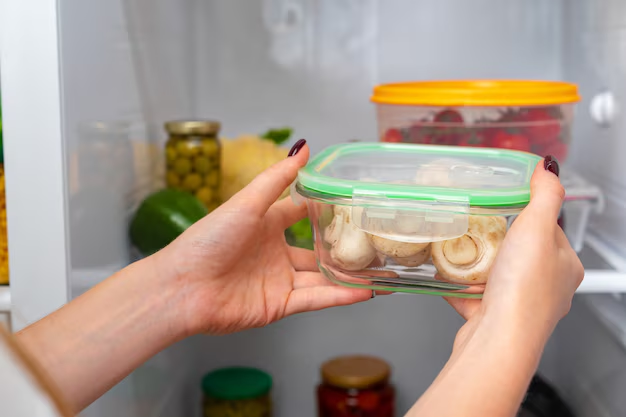What Should and Shouldn’t Go in Your Refrigerator: A Complete Guide
Ever opened your refrigerator and wondered if you’re using it to its full potential? You’re not alone. Knowing what items belong in the fridge—and which ones are just taking up valuable space—can help you keep your food fresher for longer, save energy, and even improve your diet. This guide will explore what to put in a refrigerator, offering tips and insights essential for any home cook or conscientious food consumer.
Essentials to Keep in Your Refrigerator
🥩 Fresh Proteins
Why it’s important: Fresh proteins like meats, poultry, and fish are best stored in the coldest part of your fridge. Proper storage helps reduce the risk of bacterial growth, ensuring your meals are safe to eat.
Storage tips:
- Sealed containers: Use airtight containers to prevent cross-contamination.
- Lower shelves: Store fresh proteins on the lower shelves, where the temperature is more consistent and less prone to warm airflow when the door opens.
🍎 Fruits and Vegetables
Why it’s important: Many fruits and vegetables benefit from refrigeration, maintaining their freshness and nutritional value longer.
Storage tips:
- Crisper drawers: Separate drawers often have different humidity controls—high humidity for leafy greens and low for fruits.
- Separating produce: Some fruits like apples emit ethylene gas, which can prematurely ripen other produce. Store them separately.
🥛 Dairy Products
Why it’s important: Dairy products like milk, cheese, and yogurt are perishable and best kept cold to ensure they remain fresh.
Storage tips:
- Original containers: Keep dairy products in their original containers, tightly sealed, to prevent spoilage.
- Middle shelves: Placing them near the middle prevents exposure to warm air when the fridge door opens.
🥚 Eggs
Why it’s important: Eggs last longer when refrigerated, and doing so significantly reduces the risk of salmonella.
Storage tips:
- Inside the fridge: Store eggs in their cartons inside the fridge, rather than in the door where temperatures can fluctuate more widely.
Items Often Misplaced in the Fridge
🍞 Bread
Common mistake: Refrigerating bread can cause it to go stale faster due to moisture loss.
Better alternative: Store it in a breadbox or a cool, dry area. If you need to keep it longer, freezing bread is a more effective option.
🍅 Tomatoes
Common mistake: Cold temperatures can degrade tomatoes, making them mealy and less flavorful.
Better alternative: Store them at room temperature to preserve taste and texture.
🥔 Potatoes and Onions
Common mistake: Fridges with high humidity levels can cause these root vegetables to spoil or sprout more quickly.
Better alternative: Store these in a cool, dark place, like a pantry, to maintain quality and avoid spoilage.
Optimizing Your Refrigerator Space
❄️ Temperature Control
Why it matters: The optimal temperature for a refrigerator is around 37°F (3°C). Keeping the temperature consistent ensures food safety and freshness.
⏰ FIFO Method (First In, First Out)
Why it matters: Organizing your fridge using the FIFO method helps reduce food waste. Place newer items at the back and older items up front so you’ll use them first.
Shelving Strategy
Why it matters: Positioning your food strategically can keep your refrigerator organized, making meal prep easier and more efficient.
Tips:
- Top shelves: Ideal for ready-to-eat foods and leftovers, where the temperature is slightly more stable.
- Drawer compartments: Utilize these for specific categories like produce or deli items, helping maintain proper humidity and reduce cross-contamination.
📋 Summary Section: Refrigerator Tips
What to Keep:
- 🥩 Proteins: Sealed and on lower shelves
- 🍏 Certain produce: Use crisper drawers
- 🥛 Dairy: Mid-shelf, original containers
- 🥚 Eggs: Keep in the carton inside the fridge
What to Skip:
- 🍞 Bread: Store in a breadbox or freeze
- 🍅 Tomatoes: Keep at room temperature
- 🥔 Onions and potatoes: Store in the pantry
Strategies for Success:
- ❄️ Maintain 37°F: Consistent temperature ensures freshness
- ⏰ FIFO method: Minimize waste, optimize usage
- 🥡 Efficiency strategies: Top shelves for leftovers, drawers for produce
By mastering these fundamental principles and tips, you can transform your fridge into a fresh-food fortress, ensuring everything you store is safe to eat and as tasty as it was meant to be.
Related Topics: Exploring Food Preservation
🥫 The Power of Freezing
As an extension of efficient fridge storage, freezing extends your food’s life dramatically. From extra meats to batches of soup, freezing is a practical method that complements proper refrigeration, saving you time and money.
🍯 Fermentation and Pickling
Another angle to consider is fermentation and pickling for preserving food while maintaining or even enhancing flavor. Refrigerator pickles or fermented foods can introduce variety into your diet while optimizing fridge space.
🥗 Meal Planning
A well-planned week’s worth of meals means less clutter in your fridge and less stress figuring out what to cook. With an efficient use of refrigeration, you can make meal planning simple and effective.
With this guide, you’re well-equipped to optimize your refrigerator space effectively, make informed decisions about what foods to keep cold, and explore related food storage methods for a more organized, efficient kitchen. Embrace these tips to save energy, reduce waste, and improve the quality of your meals!
